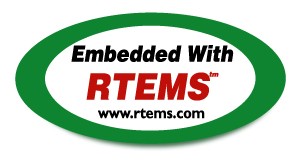


 RTEMS C User's Guide
RTEMS C User's Guide
Developing an MPCI layer for a heterogeneous system requires a thorough understanding of the differences between the processors which comprise the system. One difficult problem is the varying data representation schemes used by different processor types. The most pervasive data representation problem is the order of the bytes which compose a data entity. Processors which place the least significant byte at the smallest address are classified as little endian processors. Little endian byte-ordering is shown below:
+---------------+----------------+---------------+----------------+ | | | | | | Byte 3 | Byte 2 | Byte 1 | Byte 0 | | | | | | +---------------+----------------+---------------+----------------+
Conversely, processors which place the most significant byte at the smallest address are classified as big endian processors. Big endian byte-ordering is shown below:
+---------------+----------------+---------------+----------------+ | | | | | | Byte 0 | Byte 1 | Byte 2 | Byte 3 | | | | | | +---------------+----------------+---------------+----------------+
Unfortunately, sharing a data structure between big endian and little endian processors requires translation into a common endian format. An application designer typically chooses the common endian format to minimize conversion overhead.
Another issue in the design of shared data structures is the alignment of data structure elements. Alignment is both processor and compiler implementation dependent. For example, some processors allow data elements to begin on any address boundary, while others impose restrictions. Common restrictions are that data elements must begin on either an even address or on a long word boundary. Violation of these restrictions may cause an exception or impose a performance penalty.
Other issues which commonly impact the design of shared data structures include the representation of floating point numbers, bit fields, decimal data, and character strings. In addition, the representation method for negative integers could be one's or two's complement. These factors combine to increase the complexity of designing and manipulating data structures shared between processors.
RTEMS addressed these issues in the design of the packets used to communicate between nodes. The RTEMS packet format is designed to allow the MPCI layer to perform all necessary conversion without burdening the developer with the details of the RTEMS packet format. As a result, the MPCI layer must be aware of the following:
RTEMS_MINIMUM_UNSIGNED32S_TO_CONVERT
thirty-two (32) quantities of the packet.
Copyright © 1988-2008 OAR Corporation